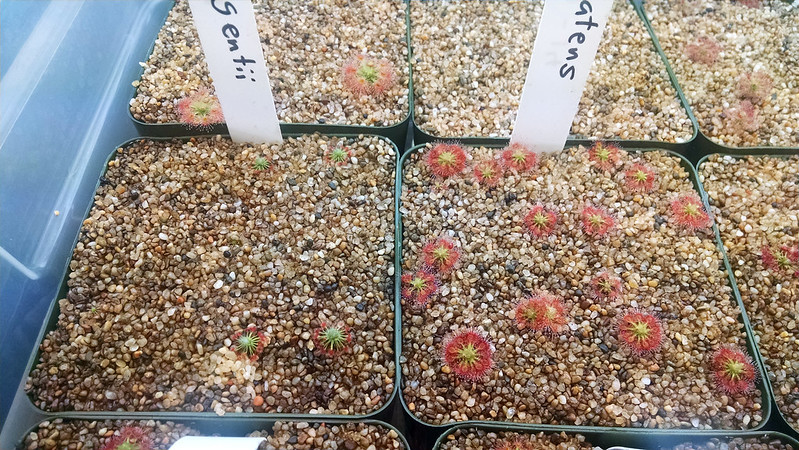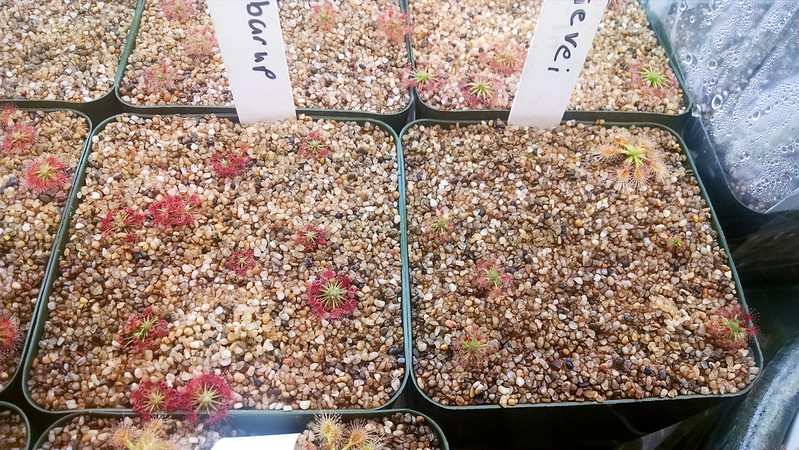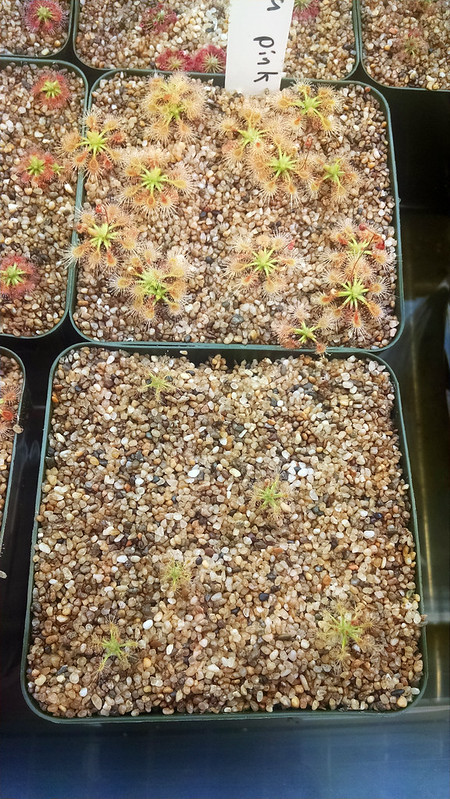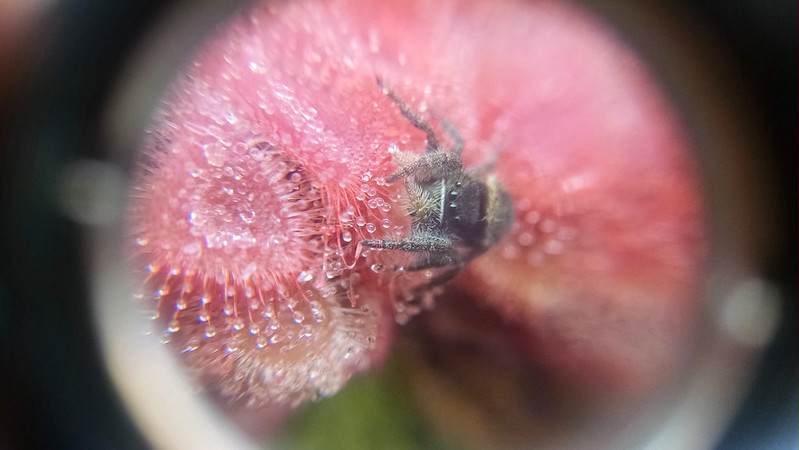Back in December I started a
whole bunch of pygmy sundews from gemmae. Most of them have done pretty well! Let's check in.
 |
| Drosera barbigera type form on left, Drosera pulchella orange flower on right. |
 |
| Drosera sargentii on left, Drosera patens on right. |
 |
| Drosera ×Dork's Pink on the left, Drosera occidentalis (or lack thereof) on the right. |
 |
| Drosera roseana on the left, Drosera pygmaea on the right. |
 |
| Drosera paleacea giant form on the left and Drosera leucoblasta (Brookton) on the right. |
 |
| Drosera ×Carbarup on the left and Drosera grievei on the right. |
 |
| Drosera omissa pink flower up top and Drosera silvicola down below. |
A few observations about the pygmies:
- D. occidentalis pretty much failed across the board. I think that the gemmae, being so small, dessicated on the sand before they could reach the media. It's too bad, because D. occidentalis is exactly the pygmy to most benefit by keeping the moss down. Maybe I'll do one final order.
- D. omissa is a total beast. Easily the most successful and vigorous of the batch.
- I like the color on D. patens and D. palacea a lot.
- The gemmae that were more expensive (D. silvicola and D. sargentii, for example) haven't been as vigorous. I guess that's part of rarity.
Here's how the Pygmy Garden is shaping up.
 |
| The Pygmy Garden is looking pretty good! |
There are a couple bare patches. Maybe I'll fill them in with some
Drosera scorpioides and
Drosera callistos.
As a bit of an aside, look at this visitor I had to the collection while I was photographing my collection.
 |
| Hi there cutie! |
A cute little jumping spider on my
Drosera burmannii! I plucked the little dude off because I really like them and my
D. burmannii have enough to eat already.









No comments:
Post a Comment